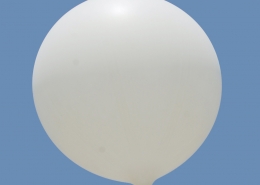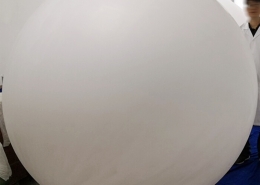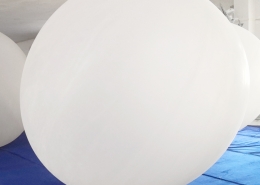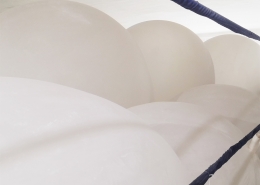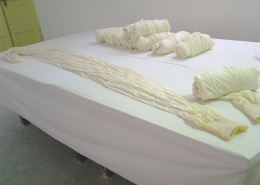support
Summary of the report on the releasing of 3000g Meteorological Balloons in Near Space
Location: 3 relevant regions in central and western China
Duration: From June 5th to July 14th in three locations
Releasing Conditions: The net lifting force for releasing is calculated based on the weight of the counterweight. The balloons are inflated to approximately 80cm off the ground.
Measured Results:
Location A: Average ascent altitude of 42,269m, average ascent rate of 409m/min, and 90% effectiveness at 40km altitude.
Location B: Average ascent altitude of 44,828m, average ascent rate of 354m/min, and 100% effectiveness at 40km altitude.
Location C: Average ascent altitude of 42,947m, average ascent rate of 375m/min, and 91% effectiveness at 40km altitude.
Overall average ascent altitude of 42,947m, with 91% effectiveness at 40km altitude. The reliability at 40km altitude is very high.
Issues and Suggestions:
Convenience of inflation handle:
Currently, our company has successfully designed an automatic inflation nozzle and accompanying balance device for 3000g meteorological balloons. During usage, the releasing personnel only need to connect the inflation nozzle (already tied to the handle before leaving the factory) to the inflation device for inflation. After inflation, there is no need to tie or hold the handle; the balloon can be directly released. This greatly reduces the operational steps for the releasing personnel, ensuring convenience and speed.
Quantitative control of inflation:
In the current mode, the inflation amount is calculated by adjusting the buoyancy using the weight of the balance device. This method is feasible in indoor and calm wind conditions. However, during outdoor inflation, the balloon may sway slightly in windy conditions, making it difficult to measure the inflation amount accurately. To address this issue, our company has designed an inflation quantification device to control the hydrogen gas quantity and minimize external influences.
Releasing in high winds:
During the experiments, strong winds caused the balloon to scrape against the ground and the radiosonde to collide with nearby structures, resulting in release failure. It is suggested to use a large balloon launching system on windy days to increase the success rate of balloon releasing.
Ground protection facilities for inflation:
As required, rubber pads for inflation protection, touch grounding sticks, and static grounding wires should be provided. It is recommended to strictly follow the operating procedures for releasing and ensure the implementation of inflation safety protection measures.
Standardization of net lifting force measurement:
Excessive inflation does not significantly affect ascent speed but reduces the maximum ascent altitude. The inflation amount can be adjusted slightly based on actual conditions at each base, but it should not be excessive. It is recommended to control the net lifting force within the range of 1.8-2.5kg.
Stability of radiosonde quality:
During this experiment, significant variations in temperature were observed at different altitudes, which could potentially cause inaccuracies in altitude measurements due to pressure readings obtained from the pressure sensor. To ensure effective releasing and improve reliability, it is recommended to use radiosondes with relatively stable quality. Additionally, at 40km altitude, where the air pressure is low, measurement errors in the pressure sensor can lead to large fluctuations in the ascent altitude. If conditions permit, it is recommended to use GPS/Beidou radiosondes.







